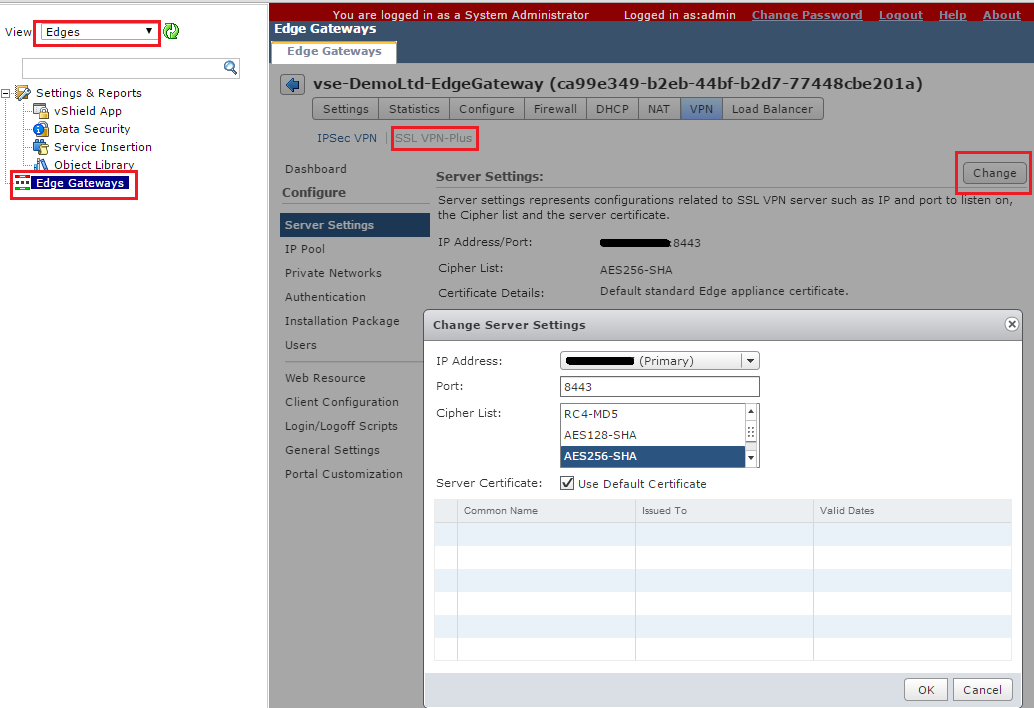

I’ve decided to install the client silently so it won’t ask any question to the user. Once that’s done we need to create an installation package for the thick client. All the private networks you add here (and enabled) will effectively be installed in the routing table of the client with a metric = 1 This network is segregated from any existing subnet in your NSX environment, does not need to be configured on other devices on the physical networks with the exception of routes that point to it.Įnable the SSL VPN-Plus service from the Dashboard ( Dashboard > Enable)Īdd the Private Network that you want to “expose” via the VPN.

The pool of IP addresses will be released to the VPN clients with once they authenticate and connect to the network. The search base is effectively the OU DN (Distinguished Name) in my case OU=Cloud_Lab,DC=cloudlab,DC=localīind DN is the DN of the user you use to login to AD, in my case called labadmin (CLOUDLAB\labadmin) and its DN is CN=Lab Admin,OU=Cloud_Lab,DC=cloudlab,DC=localīind password is the password for Bind DN My AD Organisational Unit (OU) where I’m storing all the Groups and Users is called Cloud_Lab

I’m using AD authentication as I’m not a big fan of creating local users. I’m using 192.168.130.4 as primary IPv4 listener and I’ve changed the cipher to AES256-SHA On the Branch ESG, Manage > SSL VPN-Plus > Server Settings > Change The objective to achieve is to be able to connect to web-sv-02a (172.16.40.1) from outside, here represented by the mobile user in the subnet 10.0.10.0/24 who will VPN in. Administrator can also direct the traffic to a Web filtering or caching device (proxy).Secure web access with the thick client.Secure remote access without the use of a jump box.Authentication through Local, RADIUS or LDAP.
#Ssl vpn plus client full


 0 kommentar(er)
0 kommentar(er)
